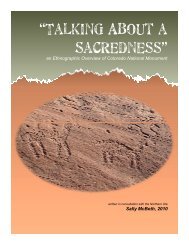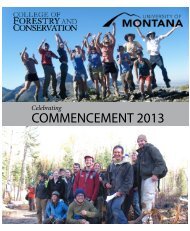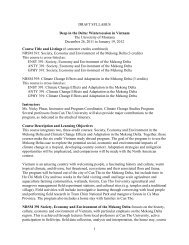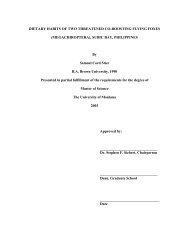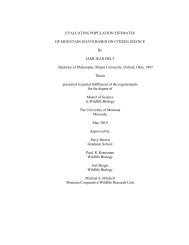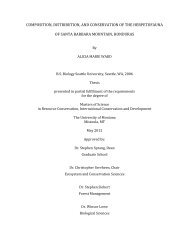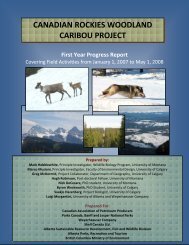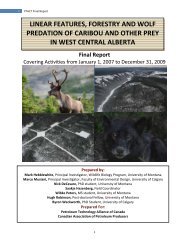Swidden Agriculture: Ancient Systems in Transition Sustaining Food ...
Swidden Agriculture: Ancient Systems in Transition Sustaining Food ...
Swidden Agriculture: Ancient Systems in Transition Sustaining Food ...
You also want an ePaper? Increase the reach of your titles
YUMPU automatically turns print PDFs into web optimized ePapers that Google loves.
Integral swidden systems can be thought of ecologically as historic<br />
anthropogenic disturbances whose specific attributes are reflected <strong>in</strong> and may<br />
be important to reta<strong>in</strong><strong>in</strong>g contemporary forest species composition, structure<br />
and ecosystem processes. Ecological disturbance attributes can be described<br />
<strong>in</strong> terms of their (modified from Uhl, 1990):<br />
• Type – e.g., small gaps (tree falls) or light burn (<strong>in</strong>tegral),<br />
• Size – impacts biophysical conditions (e.g., regeneration & microclimate)<br />
• Intensity/duration – e.g., fire temperature, years of cultivation, etc.<br />
• Frequency – return <strong>in</strong>terval (susta<strong>in</strong>able: 15-20 yrs), if shorter degradation<br />
• Distance - from undisturbed vegetation<br />
Differences between <strong>in</strong>tegral and <strong>in</strong>cipient swidden practices can be compared<br />
by describ<strong>in</strong>g their specific disturbance attributes and associated effects.<br />
Integral Incipient



